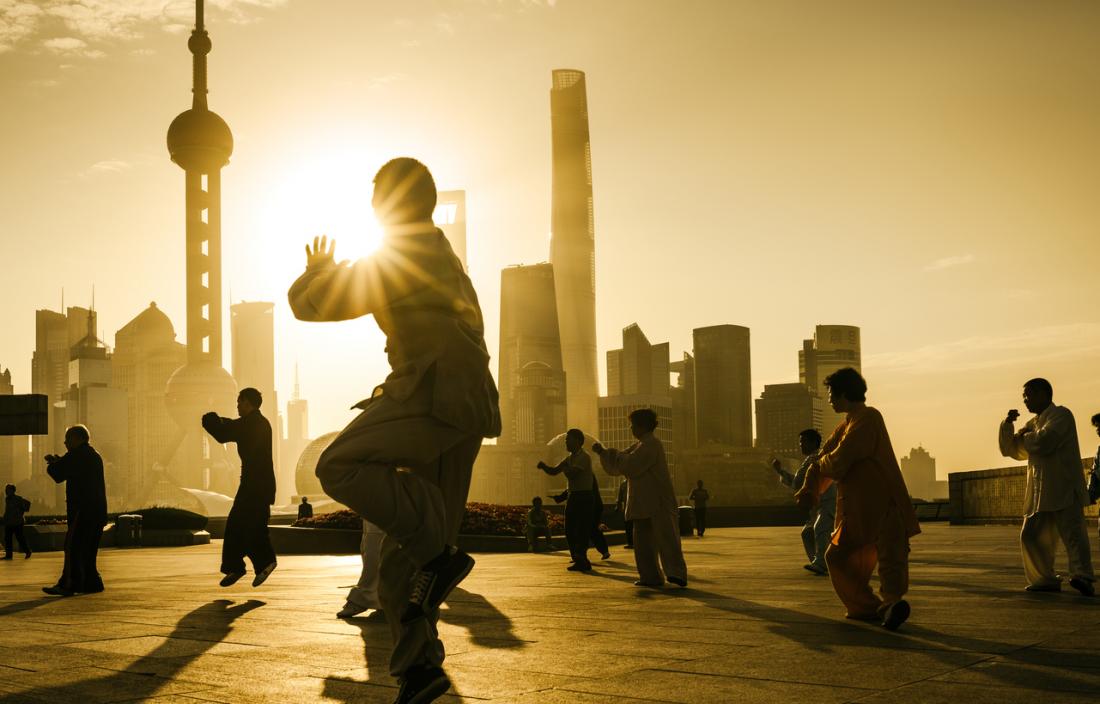Hi, welcome to my website. I’m a Tai Chi teacher based in Swanage, Dorset, offering private lessons to individuals and small groups from my home, within 10 mins drive of Swanage town centre. I teach a range of Kung Fu systems including Tai Chi – the softest, deepest, richest and most dynamic style of them all.
What kind of Tai Chi do I teach and why?
People learn & practise Tai Chi for different reasons, and there are many different styles to choose from. But all systems of Tai Chi have a few things in common. What I mainly teach, is a deep understanding of that common ground, which you can apply to any move from any style of martial art to make it good.
When I teach Wing Chun Kung Fu, I teach it mainly to help people with Self Defence. But when I teach Tai Chi, it’s more about becoming a master of your own body. Understanding your body’s mechanics and energetics so you can control it better. Naturally, you’ll become more confident in manipulating other bodies too. This has obvious Self Defence benefits, but Tai Chi is first & foremost a system of personal kinesthetic development and a gateway into spiritual development.
Core principles
The key principles that govern how I do & teach Tai Chi include:
- Be ready for any kind of attack from any direction at any time. This means, no over-leaning or over-reaching or over-stretching or over-collapsing or over-relaxing or over-tensing to the point that you can’t instantly contract or expand or move as required to respond appropriately to any incoming attack.
- Always feel. Stay sensitive & responsive. Always adapt, always adjust to what’s happening. Never rely on brute strength or clashing force. Always aim to effortlessly trump what the opponent is doing by changing your energy & structure accordingly. If it feels hard, find a better way. Feel free to use all possible angles & adjustments. But energy conservation is also important, so aim for simplicity & efficiency, but this does not trump the requirement for maintaining balance and achieving overall success – this is the ultimate priority.
Training methods
Push Hands and Sticky Hands
Tui Shou (Push Hands) is the most efficient & effective training method in Tai Chi for the purpose of optimising certain types of bodily coordination, be it for Self Defence or for general proprioception through daily life. If you’re quite clumsy and often bumping into things, Push Hands could change your life in a big way (like it did for me).
Push Hands includes a series of fixed patterns to be practised in pairs, as well as a freestyle version which equates to ultra-light technical sparring.
Tai Chi Push Hands is very much like an old (pre Ip Man era) version of Wing Chun Chi Sau (Sticky Hands), which was inherited from the Shaolin White Crane system. But unlike Sticky Hands, Push Hands is usually practised without any striking (only pushing & pulling). Still, Sticky Hands does not involve hard hitting – its strikes are placed safely without hurtful impact, therefore this is a natural safe progression for the Tai Chi practitioner to supplement their Push Hands training with, for very much increased practical value from their training (for Self Defence, for Speed, for Timing, and for pressure-tested Confidence in Technique & Structure).
Solo Form Routines
We can practise any solo form you like, from any style of Tai Chi, and make it good, by focusing on the universal principles of Tai Chi as discussed throughout this page. But I have no major personal preference towards one solo form above all others, because I’m not a big fan of long solo forms generally. I appreciate some segments of some of them more than others, but I much prefer pairwork when possible. Granted, solo forms are one way for someone who’s never done Tai Chi before to slowly get familiar with the kinds of structures involved, and when you’re mainly training alone, you may be short of better options. But solo formwork is a far slower and less effective training aid than pairwork routines which provide a high level of stimulating feedback so you can feel your mistakes and correct them fast. Unlike pairwork routines & exercises, solo forms have much less self-correctional capability – you’re relying on trying to feel how balanced you are, but unless you’re training atop a mountain on a very windy day, nobody’s applying pressure from the sides to emphasise where you may be off balance, so solo forms are an extremely slow and mistake-prone way to learn.
Theory
For Tai Chi theory we can refer to the Classics which speak quite well on the subject.
The Tai Ji Quan Jing provides solid guidance about what we’re aiming for in Tai Chi (aka Tài Jí Quán) – it explains how true Tai Chi power in its full assertion comes directly from Wú Jí, the state of absolute emptiness.
Even Laozi makes explicit reference to Wu Ji in his Dao De Jing (page 28) while also regularly referring to the principles of Wu Ji and Tai Ji by different names (they are akin to Dao and De respectively).
The Tai Ji Quan Jing also refers to the value of leverage (4 oz moves 1000 lbs) and to the goal of unifying the body’s energy (a feather can’t be added, nor can a fly take off, without the whole body adjusting). The Tai Ji Quan Jing also refers to the Ba Gua of the Yi Jing, describing how they’re reflected in the 8 core energies & directions of hand techniques (4 carinal, 4 ordinal). It also refers to the five elements, the five phases, the Wu Xing, and how they’re reflected in the five key directions of stepping from a bladed stance (4 outward directions, 1 static).
